Astbury Public Lecture Series
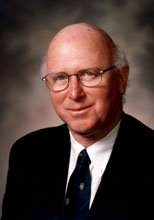
The Astbury Public Lecture series aims to bring exceptional scientists and public speakers to the University of Victoria. The series celebrates the contributions of Alan Astbury FRS (1934-2014), including the tremendous role he played in building particle physics research at UVic and in Canada. The inaugural Astbury Lecture was presented by CERN Director General, Rolf-Dieter Heuer, in April 2015.
Alan Astbury joined the University of Victoria as the inaugural R. M. Pearce Chair of Physics in 1983. His already distinguished resume included being co-spokesperson of the UA1 experiment that discovered the W and Z bosons at CERN (recognized with the Nobel Prize for Carlo Rubbia and Simon van der Meer). On arrival in Victoria, Alan built one of the most successful high energy physics groups in Canada and, among many leadership roles, served as Director of the Institute of Particle Physics, and guided TRIUMF through a challenging period as Director from 1994-2001. During his retirement (in name only), Alan served as President of IUPAP from 2005-2008.
2023 - Prof. Patrick Brady, Spokesperson, LIGO Scientific Collaboration, and Director, Leonard E Parker Center for Gravitation, Cosmology and Astrophysics, University of Wisconsin - Milwaukee

Whispers from the Universe: Gravitational Waves, Black Holes, and Neutron Stars
Prof. Patrick Brady, Spokesperson, LIGO Scientific Collaboration, and Director, Leonard E Parker Center for Gravitation, Cosmology and Astrophysics, University of Wisconsin - Milwaukee
Friday, May 19, 2023 5:30 pm, Bob Wright Centre A104
Abstract: Using specially designed instruments, scientists can now measure gravitational waves coming from colliding black holes and neutron stars. In this public talk, Brady will recount how an idea for a gravitational-wave detector conceived in 1972 eventually led to the measurement of gravitational waves coming from colliding black holes and neutron stars more than 40 years later. Along the way, you'll learn how gravitational waves are generated, what happens at the black hole event horizon, how collisions of neutron stars are responsible for most of the gold in our Universe, and what mysteries may be soon solved by gravitational-wave astronomy.
2018 - Dr. Neil Turok, Director, Perimeter Institute
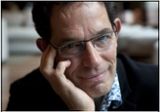
Quantum Universe
Dr. Neil Turok, Director, Perimeter Institute
Monday, September 10, 2018 6:00 pm, Bob Wright Centre B150
Abstract: Observations reveal the cosmos to be astonishingly simple, and yet deeply puzzling, on the largest accessible scales. Why is it so nearly symmetrical? Why is there a cosmological con- stant (or dark energy) and what fixes its value? How did everything we see emerge from a singular “point” in the past? Many lines of evidence now point to a quantum beginning, in which spacetime itself was governed by quantum laws. Hitherto, it has been assumed that such a beginning necessarily required cosmic inflation, and ad hoc ingredients including an initially dominant “inflaton” field. Recently, using powerful new mathematical techniques, Turok and colleagues have proven these proposals to be mathematically inconsistent. More excitingly, they now have a glimpse of a far more minimal and predictive “causa sui” cosmol- ogy. Exciting consequences include the simplest-yet explanation of the nature of the dark matter - it consists of heavy, nearly right handed partners of the observed light, nearly left handed neutrinos.
2017 - Prof. Barry Barish, Linde Professor of Physics, emeritus, Caltech
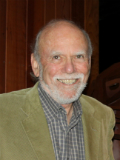
From Einstein to Gravitational Waves and Beyond
Prof. Barry Barish, Linde Professor of Physics, emeritus, Caltech
Thursday, May 4, 2017 7:30 pm, Bob Wright Centre B150
Abstract: Einstein predicted the existence of gravitational waves one hundred years ago. They have been recently observed from pairs of merging Black Holes by the Laser Interferometer Gravitational-wave Observatory (LIGO). The physics of gravitational waves, the detection technique, the observations, including latest results, and implications will all be discussed.
2016 - Prof. Sir Tejinder Singh Virdee, FRS, Imperial College, London
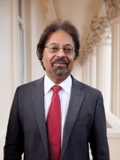
The Long Road to the Higgs boson and Beyond
Prof. Sir Tejinder Singh Virdee, FRS, Imperial College, London
Tuesday, April 26, 2016 7:30 pm, Bob Wright Centre B150
Abstract: The discovery in July 2012 of the Higgs boson at the Large Hadron Collider (LHC) constitutes one of the most important scientific discoveries of this new century. It completes the particle content of the Standard Model (SM) of Particle Physics.
This talk will describe the journey to the discovery of the Higgs boson and look ahead to the LHC programme over the next two decades. Brief details will be given of the design and construction of the ATLAS and CMS experiments. The discovery of the Higgs boson will be described and selected results from searches for the widely anticipated new physics beyond the SM will be presented.
In 1983, the W and Z bosons, the mediators of a fundamental interaction that governs phenomena such as the shining of stars, were discovered at CERN, a discovery in which Prof. Alan Astbury played a crucial role. The search for the Higgs boson then became the most important one in particle physics. During the last 25 years, the LHC accelerator, and the ATLAS and CMS experiments at CERN were conceived, designed, constructed and are now operating to tackle some of the most fundamental questions about the origin, the evolution and the composition of our universe. A primary aim was to search for the Higgs boson to reveal the mechanism for generating mass of fundamental particles. Mass is what gives our universe substance. Amongst other questions being addressed are: What constitutes dark matter? Are there extra dimensions of space? Why is the universe composed of matter and not antimatter? The answers have the potential to alter our perception of how Nature operates at the fundamental level.
The LHC restarted operations in spring 2015, with double the beam energy. By the end of this decade the LHC experiments will have examined ten times more proton-proton collisions than done so far, and by mid-2030’s some 100 times more collisions. These data will not only provide more definitive information about the nature of the found Higgs boson, but also whether it is alone or comes with an entourage of heavy fundamental particles. It is known that the SM is only a low energy manifestation of a more complete theory. Searches will be made for physics beyond the SM in order to illuminate the road ahead to the cherished goal of a unified theory of all physical phenomena in Nature.
2015 - Dr. Rolf-Dieter Heuer, Director General, CERN
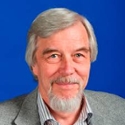
Breaking the wall of the hidden universe - what the discovery of the Higgs boson tells us about Physics, Mankind and the Universe
Dr. Rolf-Dieter Heuer, Director General, CERN
The inaugural Astbury Lecture was presented by Dr. Rolf-Dieter Heuer, Director General of CERN on April 27, 2015. Dr. Heuer was introduced by University of Victoria President Jamie Cassels.
Abstract: With the start of the Large Hadron Collider (LHC) at CERN, particle physics entered a new era. The LHC will provide a deeper understanding of the universe and the insights gained could change our view of the world, and the talk will present some of the reasons for the excitement surrounding the LHC. The LHC is expected to yield insights into the origin of mass, the nature of dark matter and into many other key questions. This lecture will address the exciting physics prospects offered by the LHC, discuss in particular the recent discovery of the Higgs-Boson, and present a look forward.
